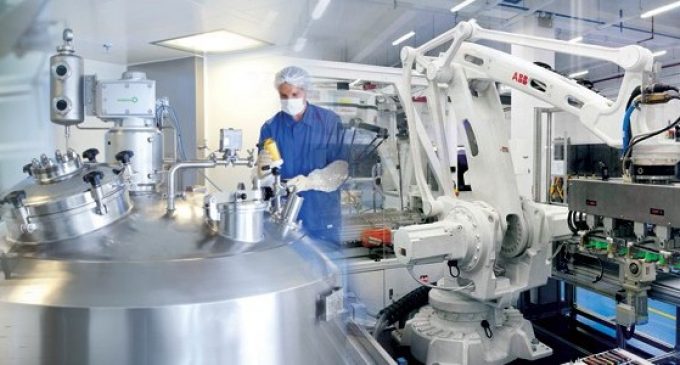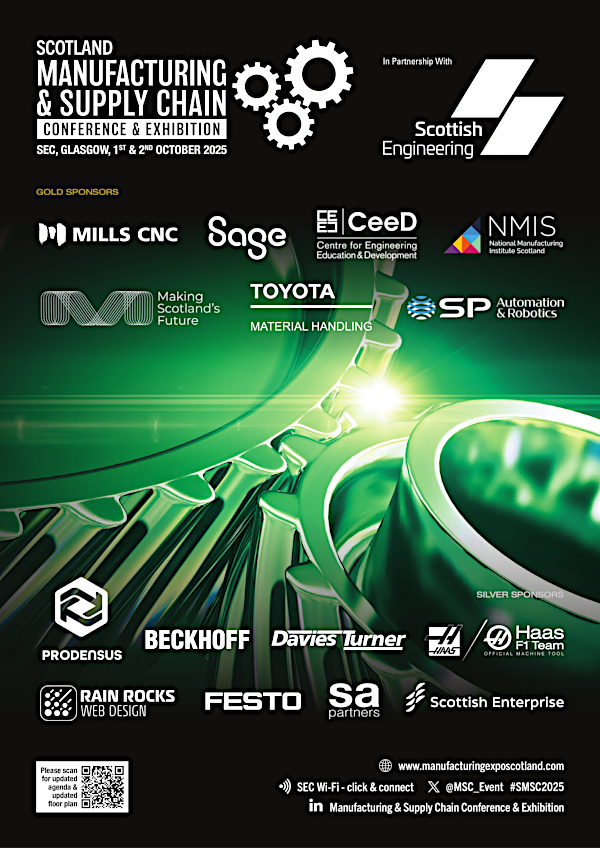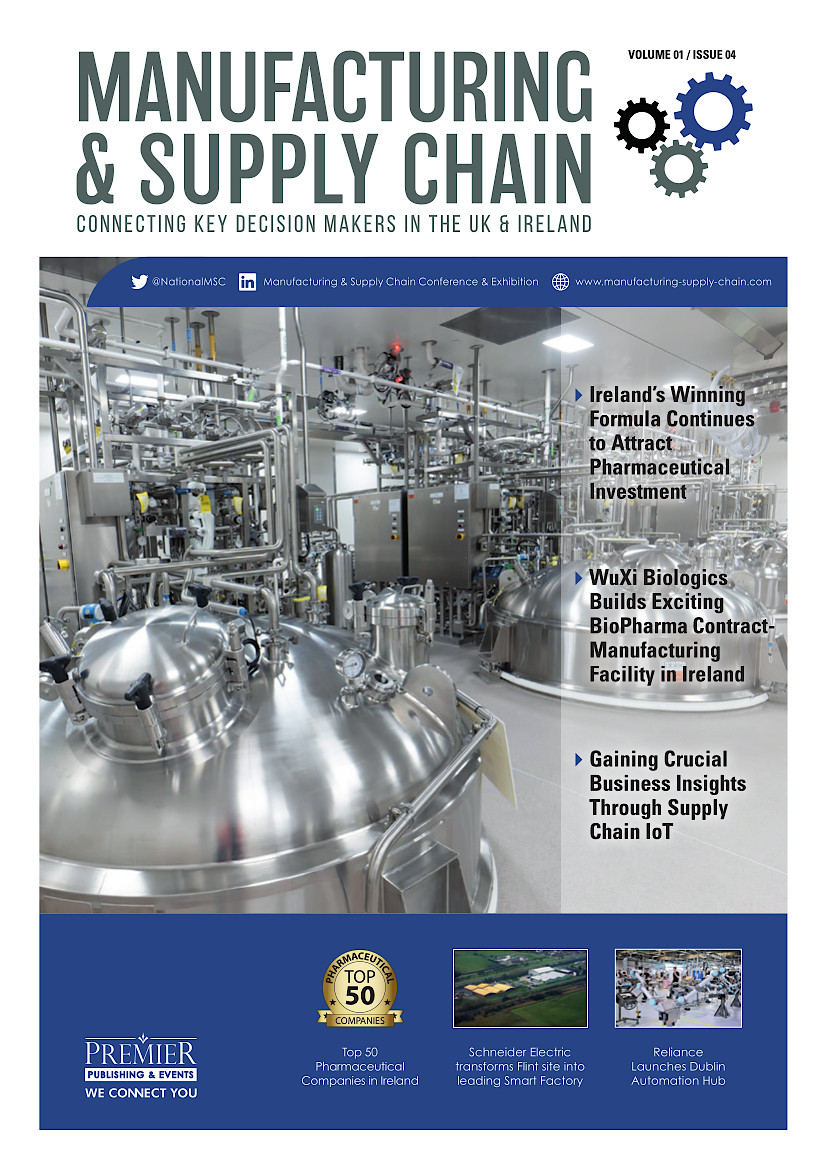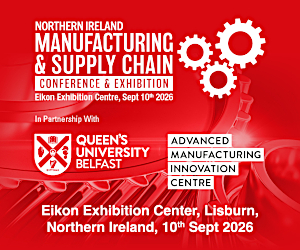Manufacturing & Supply Chain Ireland Online Conference & Exhibition – August 12th 2020

The manufacturing and supply chain sector in Ireland is experiencing a once in 100 year event that will have implications long after the Covid-19 pandemic has passed. The Manufacturing & Supply Chain Ireland Online Conference & Exhibition, being held on August 12th 2020 between 10 am and 4 pm BST, will bring together all of the key stakeholders from industry, Government & academia to form a narrative and a platform to pivot to the new normal.
The Pandemic’s Short-Term Effects on Manufacturers in Ireland
The COVID-19 pandemic hit manufacturers in an unexpected and unprecedented way. For the first time in modern manufacturing history, demand, supply and workforce availability are affected globally at the same time.
Some companies that provide and deliver vital goods like personal care, paper and pharmaceutical are struggling to meet demand driven by panic buying. Others are experiencing dramatic drops in demand and extreme pressure to cut operational costs. Every major manufacturer is now experiencing disruptions across their supply chains of parts and raw materials, driven by what may now become recurring volatility of supply from South Asia.
Social distancing and employee safety measures put an additional level of pressure on manufacturers, as 40%-50% of their workforce will be unavailable to perform their functions on-site.
While office employees and knowledge workers are able to shift to remote work as the default operating mode, most factories are simply not designed to be managed remotely and lack the digital tools and infrastructure needed to support such activities.
Long-Term Effects
The coronavirus pandemic presents a seminal moment for manufacturing in Ireland. As companies scramble to make sense of the short-term situation, we need to look beyond the fog of uncertainty towards possible long-term changes to the industry. Most of the trends below already started some time ago. The current crisis will merely accelerate their adoption:
Revival of (Automated) Domestic Manufacturing: Countries that have become so reliant on off-shore supplies for basic needs are now seeing the downside of decades of off-shoring production. In an effort to reduce the cost of everyday goods, manufacturing lost the ability to produce the necessities for combating the current pandemic. Machines account for 85% of GDP in developed nations and we may soon see a surge of incentive plans to bring back manufacturing segments that are considered critical for national resilience and sustainability. Governments are almost certain to use domestic manufacturing as part of their plan to build up strategic resilience in the aftermath of the current crisis.
Automation will be a key component of the effort to revive domestic manufacturing. While previous off-shoring trends were fuelled by a race to the bottom in terms of labour and productivity costs, advances in automation and robotics have drastically increased productivity across a number of manufacturing processes. Many of these processes can be easily re – shored and deployed domestically. Automated manufacturing will not bring back demand for low-skilled labour, but will create new jobs and opportunities for digitally-savvy workers.
Decoupling of Supply Chains: Supply chains are experiencing an unprecedented level of shock, especially for manufacturers that rely on long and inflexible supply chains from a limited set of suppliers in South Asia. In the short-term, manufacturers are looking for ways to quickly ensure continuity and introduce flexibility. Companies that invest in making their supply chains dramatically more transparent, predictable and resilient by using a wider base of global suppliers will gain a significant advantage. Suppliers, on the other hand, will seek to establish a more diversified client base and more localized customers across multiple geographies. Functions, digital tools and processes that help manage supply chain risk, accuracy and flexibility will ramp up across the industry, leading to faster digitization of supply chains. As governments and multi-nationals seek better insights into the complexities of supply and distribution chains for critical goods, digital tools will help better inform policy and business decisions. Greater visibility and coordination across the supply chain will enable better collaboration with a wider base of suppliers, ultimately driving decoupled, highly efficient—and more resilient—supply chains.
Data Infrastructure as a Strategic Asset: In 2017, the Economist announced that data has become the world’s most valuable resource. The COVID-19 crisis has made having access to reliable, real-time data an absolute necessity for coordinating the right medical response. In the near future, data will become an even more strategic resource across multiple facets of business and society. For Western nations, this will mean greater investment in data connectivity, acceleration of the deployment of 5G networks and a push for more valuable insights into leading economic indicators.
For manufacturing, greater connectivity will mean significantly accelerated deployment of Industrial IoT, including sensing, data visualization, remote collaboration tools and AI-based insights across their operations. Control-tower view of data and insights across the whole manufacturing operation will become a standard component of running a manufacturing organization.
Digitization as a Competitive Advantage: Following the Great Recession, McKinsey analysed the performance of publicly traded companies and found that 10% were much more resilient to the crisis than their peers. They achieved resiliency by creating financial and operational flexibility, cutting costs, and by building a growth foundation to capture market opportunities at the end of the crisis. The resilient companies also invested in software technologies that gave them greater predictability and efficiency, resulting in a significant competitive edge.
In the past decade, advances in AI and IoT technologies have enabled tremendous efficiencies in predictability, capacity, availability and flexibility of supply chain and manufacturing operations. Companies that have embraced these technologies early are already seeing a 7% revenue growth advantage over their peers McKinsey found. The economic and social downturn caused by COVID-19 will create a much deeper divide between manufacturers who have just started to digitize and those who are much further ahead on their digital journey.
Remote Work, Collaboration and the ‘Virtual Shift’
Manufacturing still requires people to be physically on-site. Operators run machines. Maintenance staff maintain and repair machines. External vendors and contractors need site access to provide services and help support a significant portion of the operation. With social distancing measures in place, manufacturers may lose up to 50% of their on-site personnel.
As manufacturers face this dilemma, we will see the rapid adoption of remote diagnostic, management and collaboration tools. This will result in the emergence of a “virtual shift”: a team of specialists connected remotely and constantly online in order to guide and support the reduced “physical shift” of onsite personnel. Enabled by real time data, AI-based insights and a range of communication and collaboration tools, the virtual shift will help digitize and scale much-needed expertise across the organization and enable the onsite workforce to become more focused, effective, and ultimately significantly more productive. Virtual work is not just for the office anymore; it is a new reality that will fundamentally change the work environment in manufacturing and help accelerate a trend towards lights-out facilities.
History teaches us that global crises create fundamental shifts that affect government policies, consumer behaviour and industrial sectors for years to come. Manufacturers must understand which parts of our social, business and political environment will change in the aftermath of the COVID-19 pandemic and invest accordingly to prepare for the new normal.
To register to attend the event, visit: https://www.manufacturingirelandonline.com/


























